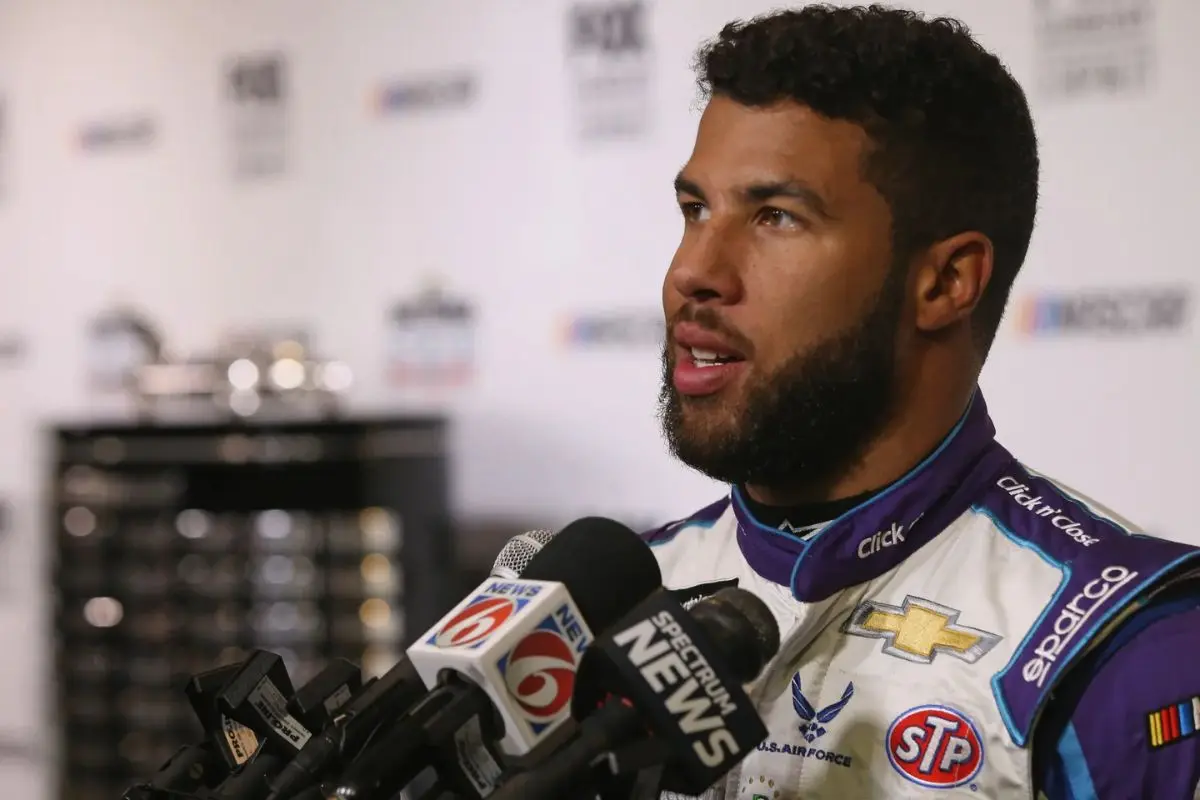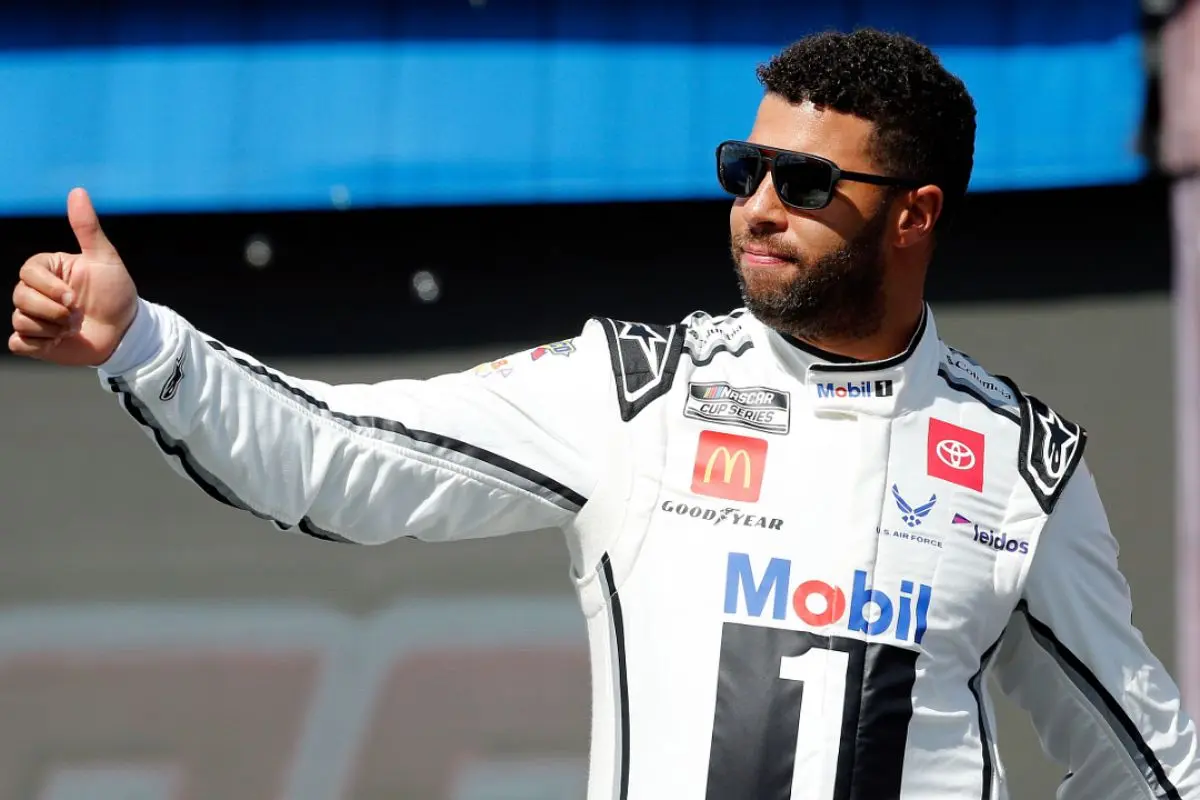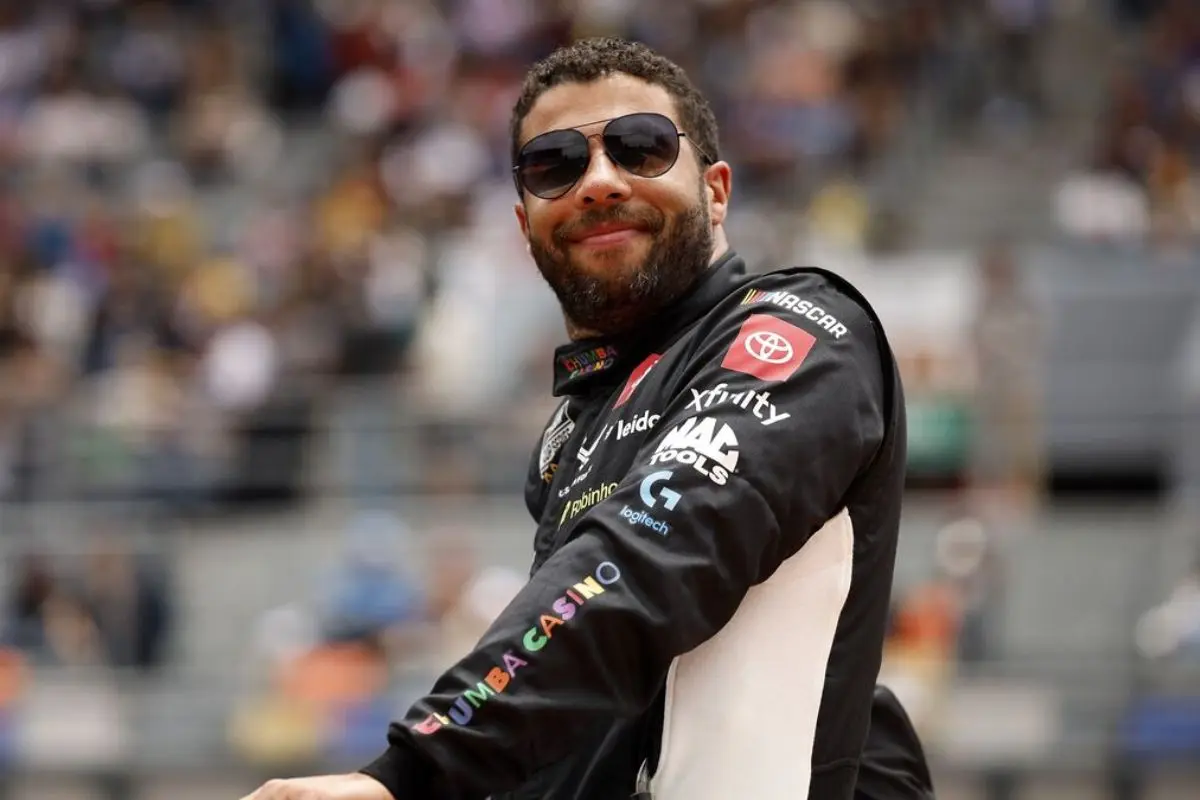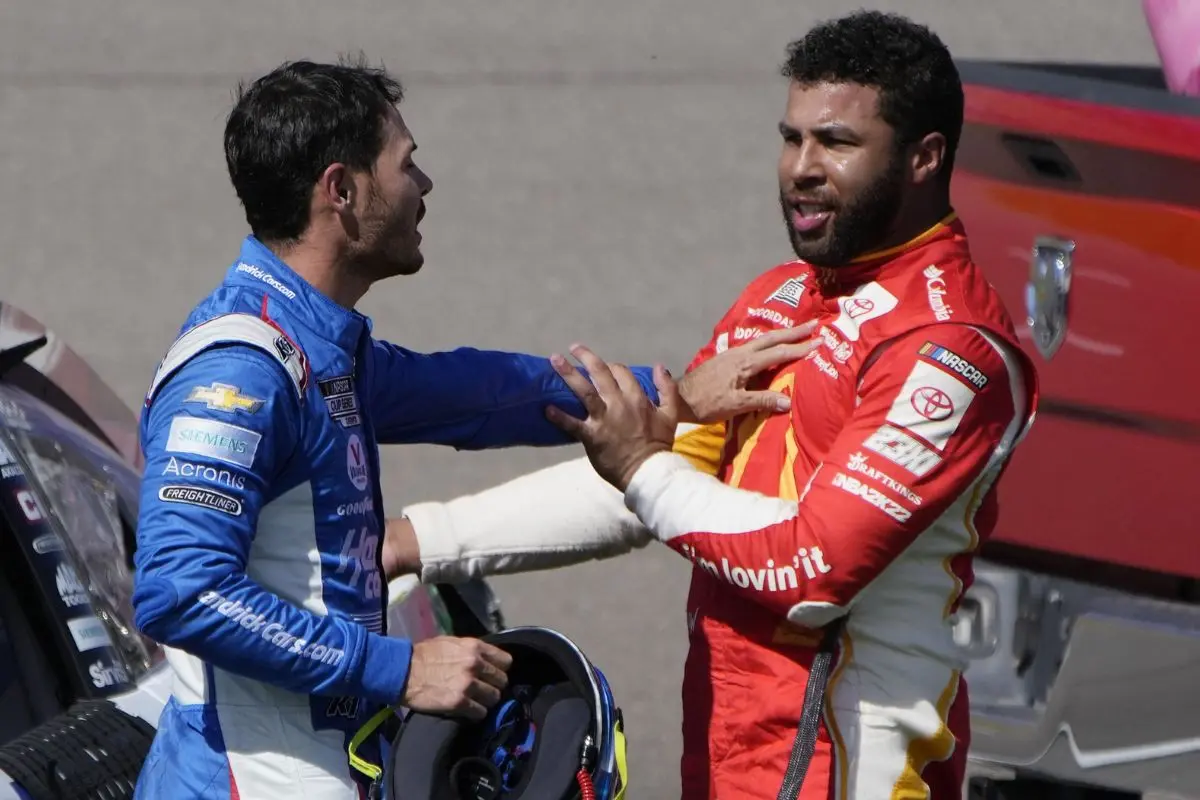Bubba Wallace‘s decision to accept responsibility for the massive crash during the Coke Zero Sugar 400 greatly shifts the narrative surrounding Kyle Larson. By stating, “I’ll take the blame,” Wallace displays commendable sportsmanship, prioritizing unity over blame. His response emphasizes the complexities of racing dynamics, illustrating character amid chaos. This powerful gesture not only silences critics of Larson but also highlights the necessity of fellowship in racing. More layers of this incident expose the intricate nature of competition.
Key Highlights
- Bubba Wallace accepted full responsibility for the “Big One,” showcasing his sportsmanship and leadership during a chaotic race incident.
- By shielding Kyle Larson from criticism, Wallace fostered a sense of fellowship rather than blame, silencing negative narratives.
- Wallace’s acknowledgment of racing complexities emphasized that incidents like the crash are often a collective challenge, not solely an individual fault.
- His humility and focus on teamwork reflect a commitment to the sport and his fellow competitors, earning respect from fans and critics alike.
- Wallace’s resilience in handling post-race scrutiny highlighted his maturity and character, reinforcing the unity within the racing community.
The Lap 28 “Big One”
In the frenetic world of NASCAR, few moments evoke the same level of excitement and danger as the infamous “Big One,” and Lap 28 of the Coke Zero Sugar 400 exemplified this phenomenon.
Chaos erupted as Bubba Wallace, battling in the high lane, lost control following a nudge from Kyle Larson. The resulting cascade of collisions ensnared notable drivers like Chase Elliott and Kyle Busch, leaving a trail of crumpled sheet metal and shattered playoff hopes.
The scene unfolded in slow motion; cars spun and smoke filled the humid air, creating a visceral spectacle. Daytona’s unpredictable nature was on full display, reminding fans and competitors similarly that in racing, fortunes can shift dramatically in an instant, amplifying the stakes of each lap.

Bubba Takes the Blame
Amid the swirling chaos of the Coke Zero Sugar 400, Bubba Wallace emerged not just as a driver but as a figure of accountability.
In a sport often rife with blame and finger-pointing, Wallace’s decision to assert, “I’ll take the blame,” resonated profoundly. This four-word declaration offered a clear contrast to the usual post-race narratives, highlighting his character and leadership.
By shielding Kyle Larson from criticism, Wallace illustrated a commitment to fellowship over self-preservation. He acknowledged the complexities of racing dynamics, noting, “I hate it was blame Bubba Wallace national day today.”
With a grin, he accepted responsibility, revealing his understanding that superspeedway incidents often unfairly burden a single driver.
“It looks like I was three wide and the five hit me and got me down there and is what it is. I hate it was blame Bubba Wallace national day today so I’ll take the blame for it.” – bubba wallace
"I think I looked and it was blame Bubba Wallace national day today, so I'll take the blame for it." – @BubbaWallace on the wreck in stage one.
Presenting partner: Billy's Tequilahttps://t.co/v0kmSf3lIA pic.twitter.com/PHEbn1Wt6i
— Frontstretch (@Frontstretch) August 24, 2025
Inside the Wreck
Bubba Wallace’s acknowledgment of responsibility set the stage for a deeper examination of the chaotic incident that unfolded during the Coke Zero Sugar 400. The wreck, sparked by Larson’s nudge, ignited a chain reaction that devastated multiple contenders early in the race.
“I think so. I didn’t think the aggression level was too high at that point. Thought everyone was playing nice and just kind of I guess premature there just unexpectedly so I hate it. Our Columbia Toyota Camry was so fast. We got up to the lead fairly quick and so appreciate everybody’s hard work. Just hate that it ended that way for sure cuz it’s still early but setting up to be a good thing.” – Bubba Wallace
Key aspects of this incident highlight its complexity:
- Wallace’s position in a three-wide scenario created inherent risks.
- Larson’s contact initiated the domino effect leading to the “Big One.”
- The timing on Lap 28 was ironic, contrasting typical late-race incidents.
- Wallace had previously shown promise, briefly leading the race.
- His resilience in the face of criticism demonstrated his resolve to rise above the chaos.
Ultimately, the incident emphasized the unpredictable nature of racing at Daytona.

What Might Have Been
What could have unfolded had the race taken a different turn? Bubba Wallace hinted at a potential resurgence, noting that a single pit stop could have recalibrated his Camry’s handling.
His acknowledgment of the car’s loose condition reflects a broader narrative at superspeedways, where car dynamics often dictate outcomes.
“Oh yeah we were a little loose little edgy everybody was battling that so we need one pit stop to get us right. We would have been fine.” – bubba wallace
Conversely, the frustrations expressed by his spotter, Freddie Kraft, highlight the contentious nature of racing decisions in high-stakes environments.
The interplay between Wallace’s responsibility and Kraft’s finger-pointing demonstrates the duality of blame in racing incidents.
Had Wallace’s tactical adjustments materialized, the narrative might have shifted from a post-race critique to a celebration of resilience, emphasizing how vital timing and strategy are in determining a driver’s fate in the unpredictable arena of NASCAR.
Bubba’s Big Moment With MJ’s Team
Victory resonates deeply within the NASCAR community as Bubba Wallace continues to carve out his legacy with Michael Jordan’s 23XI Racing team. His historic win at Indianapolis not only solidified his status but also exemplified Jordan’s investment in talent and perseverance.
- Wallace is the initial Black driver to win at Indy.
- He has secured three wins since joining 23XI Racing in 2021.
- Michael Jordan described his NASCAR involvement as a childhood dream fulfilled.
- Wallace’s humility shines through in his appreciation for team support.
- The synergy between Wallace and Jordan fuels the team’s competitive spirit.
As the playoffs approach, Wallace’s resolve remains steadfast, promising to deliver further success for 23XI Racing and its legacy.

News In Brief: Bubba Wallace’s Powerful Gesture Silences Kyle Larson Critics
In the aftermath of the Lap 28 incident, Bubba Wallace’s decision to take responsibility not only exemplified his character but also served to quell the criticism aimed at Kyle Larson. By assuming the blame, Wallace shifted the narrative from blame to understanding, promoting unity within the racing community. His moment with Michael Jordan’s team further highlighted the significance of mentorship and support in the sport. Ultimately, Wallace’s actions emphasize the importance of accountability and fellowship in overcoming adversity.
ALSO READ: Bubba Wallace Speaks Out on 2026 NASCAR—Jordan Loyalty Stuns Fans!
